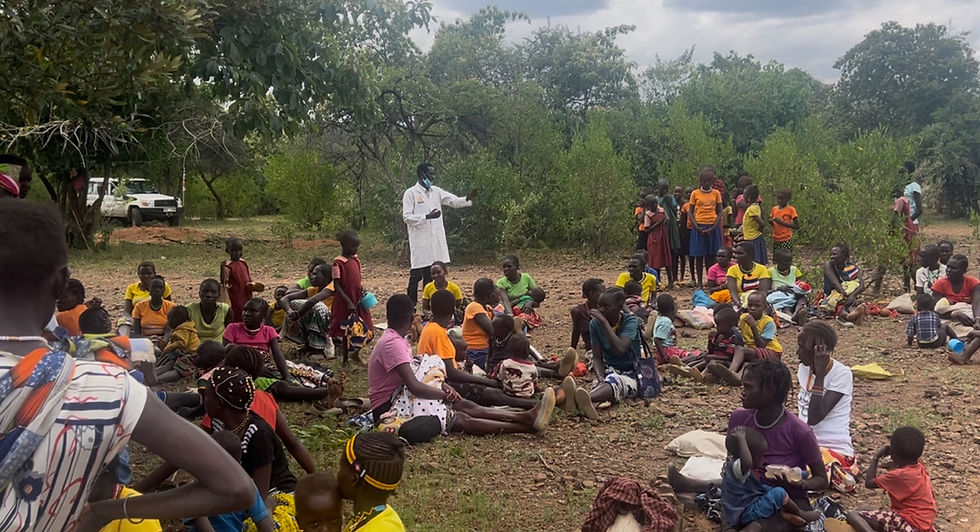Reflections on a VL Patient and CHV
- Hellen Nyakundi
- Nov 14, 2020
- 3 min read
Updated: Nov 24, 2021
“What is your name?” I ask. ‘Chebet’ she whispers as she struggles to hold back tears. She is clearly frightened. This shy, innocent, 12-year-old girl tested positive for Kala-azar at Chemolongot sub-County Hospital, a health facility that is supported by IZUMI to manage Kala-azar patients. She is scared, why wouldn't she be? She’s about to embark on a journey, with a stranger, to an unknown place to be left on her own for about a month as she gets Kala-azar treatment. Chebet’s mother is still alive but too poor to take care of her and her five other siblings. Chebet is lucky; one of the churches runs an orphanage and was kind enough to take her and one of her older sisters in.
My name is Hellen Nyakundi. I am the Izumi NTDs Project Administrator. I normally drive over 300km from Nairobi, the capital City of Kenya, to East Pokot to supervise project activities. Today I have been called by the hospital management to take a little girl to Kimalel Health Centre about 80 kilometers away for Kala-azar treatment. Chebet is unaccompanied. I feel sorry for her, I am a mother too, and I have a daughter at home almost the same age. I cannot help but empathize with the little girl.
I decide to call Jane to accompany the minor. Jane is a Community Health Volunteer who has been recruited and trained by the Izumi NTDs Project as a community mobilizer and health promoter for Kala-azar. It is during one of the visits to a school to sensitize students on Kala-azar that she came across the little girl. Jane has been trained to identify clinical signs of Kala-azar and refer patients who fit the description to Chemolingot Hospital. The girl had an enlarged spleen and presented other Kala-azar signs and symptoms like prolonged fever and severe weight loss. Jane is a mother of four children. When she is not involved in Kala-azar activities she teaches kindergarten at Sunrise Primary School. She is one of the few very lucky girls who managed to complete secondary school and got employment.
Jane arrives and, in her characteristic bubbly manner, graciously agrees to accompany us to Kimalel. We set out on our journey. Some parts of the road are more pothole than tarmac. The drive takes approximately two hours. It gives us time to talk about girls’ and women’s issues. East Pokot is a hardship area; poverty levels are over 70% and literacy rates below 30%. The main source of livelihood is pastoralism with crop production being largely nonexistent. Given the difficult environmental conditions, women in pastoralist communities are forced to grow up quickly. By 12 years of age they are considered ready for marriage. A girl’s worth is measured on the number cows she can fetch the family once she is married off. Female genital mutilation is still practiced in this community; a girl is not a woman until she undergoes the cut. Once married off, the girl is expected to take care of her family. Most of the women end up brewing alcohol or running food stands to make ends meet. Compared to women here, I live a privileged life. Things I take for granted like a hot shower, lotion, toothpaste, perfume, laptop, and a smart phone are quite the luxury here.
I drive off to Nairobi after dropping the girl off at Kimalel and Jane off at the bus stop. I couldn’t help thinking about the little girl and her probable future. She is fortunate to be treated for Kala-azar. I can only wish that through women like Jane and I, little girls in East Pokot can overcome the great odds to be the empowered women they can be.





Comments